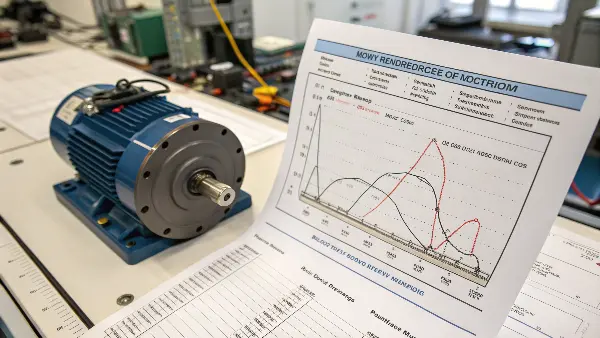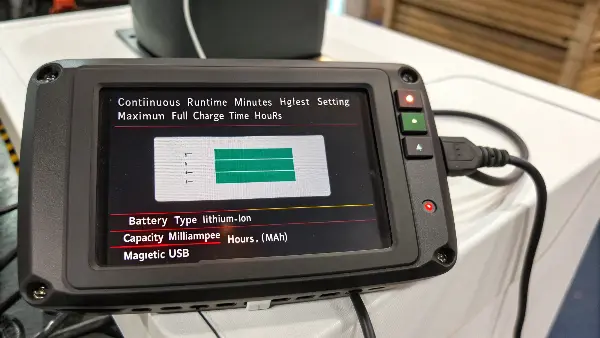Launching a new adult product is exciting, but what happens when the final version doesn’t meet expectations? Inconsistent quality, poor performance, and customer complaints can quickly damage your brand’s reputation. Partnering with a manufacturer without clear standards is a recipe for disaster and wasted investment.
To set performance benchmarks for adult products, you must define specific, measurable standards for key attributes like motor power, noise level, battery life, material safety, and durability. Collaborate with your manufacturer to create a detailed technical specifications sheet that outlines these standards and includes clear testing protocols to ensure consistent quality for every production run.

Creating a successful product line isn’t just about a great idea; it’s about flawless execution. The standards you set before production even begins are what separate a best-seller from a bargain-bin failure. But defining these standards can feel overwhelming. What exactly should you measure, and how? Let’s dive into the core benchmarks that will protect your brand and delight your customers, ensuring the product they receive is the exact product you designed.
What Are the Core Metrics for Motor Performance?
Your product’s motor is its heart, but a weak or noisy motor is one of the top reasons for customer complaints. Imagine launching your new flagship vibrator only to see reviews flood in calling it "weak" or "annoyingly loud." This feedback can kill sales and damage trust in your brand’s quality.
Core motor metrics include Rotations Per Minute (RPM) for vibration intensity, decibel (dB) levels for noise, and the number and quality of vibration patterns. These must be clearly defined and tested in your tech pack to guarantee a consistent and high-quality user experience that aligns with your brand’s promise of pleasure and discretion.

Defining motor performance is a mix of art and science. It’s not just about being the most powerful; it’s about delivering the right kind of power. As a manufacturer, I’ve seen brands make the mistake of focusing only on maximum RPMs, forgetting that noise level and the variety of sensations are just as important. A successful product balances these key elements to create a truly premium experience. Let’s break down how to specify and test each one.
Key Motor Performance Indicators
To ensure your product’s motor delivers, you need to be specific with your manufacturer. Vague requests like "make it strong" are not enough. Here are the technical details you should include in your specifications:
- Rotations Per Minute (RPM): This is the standard measure for motor speed, which translates directly to vibration intensity. Instead of just one number, you should define an RPM range for each intensity level. For example, a three-speed product might have targets like:
- Low: 4,000 RPM
- Medium: 6,500 RPM
- High: 9,000 RPM
- Noise Level (Decibels, dB): A "whisper-quiet" motor is a huge selling point. You must define an acceptable noise ceiling. We test this in a sound-dampened environment, measuring the dB level at a specific distance (e.g., 12 inches) for each intensity setting. A good target for a premium product is under 50 dB at its highest setting, which is comparable to a quiet library.
- Vibration Patterns: Simply listing "10 patterns" isn’t enough. You should work with your manufacturer to define the rhythm and sequence of each pattern. We often use visual graphs to map out the pulsation, escalation, and waves for each mode to ensure the code is programmed correctly and delivers the intended sensation.
Here’s a sample table you could use in your tech pack:
| Feature | Standard Tier | Premium Tier | Luxury Tier |
|---|---|---|---|
| Max RPM | 6,000 – 7,500 | 7,500 – 9,000 | 9,000+ |
| Max Noise Level | < 60 dB | < 55 dB | < 50 dB |
| Intensity Levels | 3-5 | 5-8 | 8+ with fine-tuning |
| Vibration Patterns | 5-7 standard modes | 8-10 complex modes | 10+ unique, programmable modes |
By providing these specific benchmarks, you eliminate guesswork and ensure every unit produced performs exactly as you intended.
How Do You Ensure Excellent Battery Life and Charging?
A product that dies too quickly or takes forever to charge is a major customer frustration. This leads to returns, negative reviews about unreliability, and the perception that your product is cheaply made. These issues can seriously undermine the trust you’ve worked hard to build with your audience.
To ensure battery life, specify the required continuous runtime in minutes at the highest setting. For charging, define the maximum full-charge time in hours. You must also specify the battery type (e.g., Lithium-ion), capacity in milliampere-hours (mAh), and the charging method (e.g., magnetic USB), including these details in your product’s technical specifications.

Battery performance is a critical aspect of the user experience, especially for rechargeable toys. It’s a promise of convenience and reliability. At PrivyPlay, we treat battery specifications with the same seriousness as motor performance. I recall a client who wanted to launch a travel-friendly toy. The number one requirement was a fast charge time and long life. We worked together to select a high-density battery that could provide over 90 minutes of runtime from a 60-minute charge, a spec that became their main marketing message.
Benchmarking Battery and Charging Systems
To avoid disappointing your customers, your benchmarks for the power system must be clear and testable. Here’s what you need to focus on:
- Battery Capacity (mAh): Milliampere-hours (mAh) measure the battery’s energy storage. A higher mAh generally means a longer runtime, but it also affects the battery’s size and cost. You need to balance performance with the product’s design and price point. A small bullet vibe might be fine with a 400mAh battery, while a larger wand vibrator might require 1200mAh or more to be competitive.
- Continuous Runtime: This is the single most important metric for users. How long will the product last on a single charge? Be specific. Your spec sheet should say something like: "Minimum 90 minutes of continuous operation at the highest vibration setting." We test this by fully charging a sample of units, running them on max power until they die, and timing the result.
- Charge Time: No one wants to wait half a day for their toy to be ready. Define a maximum charge time, for example, "Full charge from empty in under 120 minutes." This holds your manufacturer accountable for using quality charging circuits and batteries.
- Charging Method: The charging style impacts user experience and waterproofing.
- Magnetic Charging: The most popular choice today. It allows for a completely sealed, seamless body, making the product fully waterproof (IPX7).
- DC Pin Port: A common, cost-effective method, but it requires a pinhole in the device, which can compromise waterproofing if the seal isn’t perfect.
- Safety Certifications: Non-negotiable. Ensure the batteries are CE, RoHS, and FCC certified. This guarantees they have been tested for safety and won’t overheat or malfunction.
Here’s a simplified chart to guide your decisions:
| Product Type | Typical mAh Range | Target Runtime (Max Setting) | Target Charge Time | Recommended Charger |
|---|---|---|---|---|
| Mini Bullet | 300 – 500 mAh | 60 – 75 min | < 90 min | Magnetic or DC Pin |
| G-Spot Vibrator | 500 – 800 mAh | 75 – 100 min | < 120 min | Magnetic USB |
| Wand Massager | 1000 – 2000 mAh | 90 – 150 min | < 180 min | Magnetic or DC Pin |
| Couples Toy | 600 – 900 mAh | 80 – 120 min | < 120 min | Magnetic USB |
Defining these metrics ensures your product is not only powerful and pleasurable but also reliable and convenient—qualities that build lasting brand loyalty.
What Makes a Material Truly Body-Safe and Durable?
Choosing the wrong material for your adult product is not just a quality issue—it’s a critical safety risk. Imagine the nightmare scenario of a product recall because the material caused skin irritation or allergic reactions. The damage to your brand’s reputation, not to mention the potential legal issues, would be immense.
A truly body-safe material is non-porous, hypoallergenic, and free from harmful chemicals like phthalates, BPA, and latex. Medical-grade silicone is the gold standard. Durability is benchmarked through tests for tensile strength, hardness (durometer), and resistance to lubricants and discoloration. Always require material safety data sheets (MSDS) and third-party lab reports.

Material selection is the foundation of a high-quality adult product. Your customers are placing immense trust in you, and "body-safe" has to be more than just a marketing term. It has to be a provable fact. At our facility, the first thing we do with a new client is discuss materials. I often share the story of how we helped a brand switch from a cheaper TPE material to a premium, platinum-cured silicone. Their customer complaints about "sticky" feeling toys dropped to zero, and their reviews skyrocketed. This is because the right material affects everything: the feel, the hygiene, and the product’s lifespan.
Establishing Material Standards
Your tech pack must be explicit about the material’s properties and the tests required to verify them. Here’s a breakdown of the key benchmarks:
-
Material Type & Grade: Be precise. "Silicone" is not enough. Specify "100% platinum-cured, medical-grade silicone." This type of silicone is non-porous (won’t harbor bacteria), inert (won’t react with the body or lubricants), and extremely durable. Avoid TPE or TPR if you are marketing a premium, hygienic product, as they are porous and can break down over time.
-
Hardness (Shore Durometer): The "feel" of your product is determined by the silicone’s hardness, measured on the Shore A scale. A softer, squishier toy might have a Shore 00-30 rating, while a firmer, more rigid product might be Shore A 10-20. Specify the exact durometer you want, with a small tolerance (e.g., Shore A 15 ±2).
-
Durability and Stress Testing: Your product needs to withstand regular use. We perform several tests to ensure this:
- Tensile Strength Test: We stretch the material to see how much force it can take before tearing. This ensures it won’t break during use.
- Chemical Resistance Test: We submerge material samples in common water-based and silicone-based lubricants for 24-48 hours to ensure there is no swelling, softening, or degradation.
- Colorfastness Test: The product’s color should not bleed or fade. We test this by rubbing the material with white cloths (both dry and wet) to check for color transfer.
-
Safety Certifications: This is non-negotiable proof of safety. Mandate that your manufacturer provides documentation for the raw materials used. Key reports include:
- RoHS: Restricts the use of specific hazardous materials.
- REACH: Addresses the production and use of chemical substances and their potential impacts on human health and the environment.
- Third-Party Lab Tests: Independent verification for phthalates, heavy metals, and other potentially harmful substances.
Your commitment to these material standards demonstrates a profound respect for your customers’ well-being and solidifies your brand’s position as a provider of safe, high-quality pleasure products.
Conclusion
Setting clear, measurable performance benchmarks for motors, batteries, and materials is the bedrock of successful adult product manufacturing. This detailed approach moves you beyond vague hopes into the realm of precise, repeatable quality, protecting your brand, satisfying your customers, and building a foundation for long-term trust and success.
